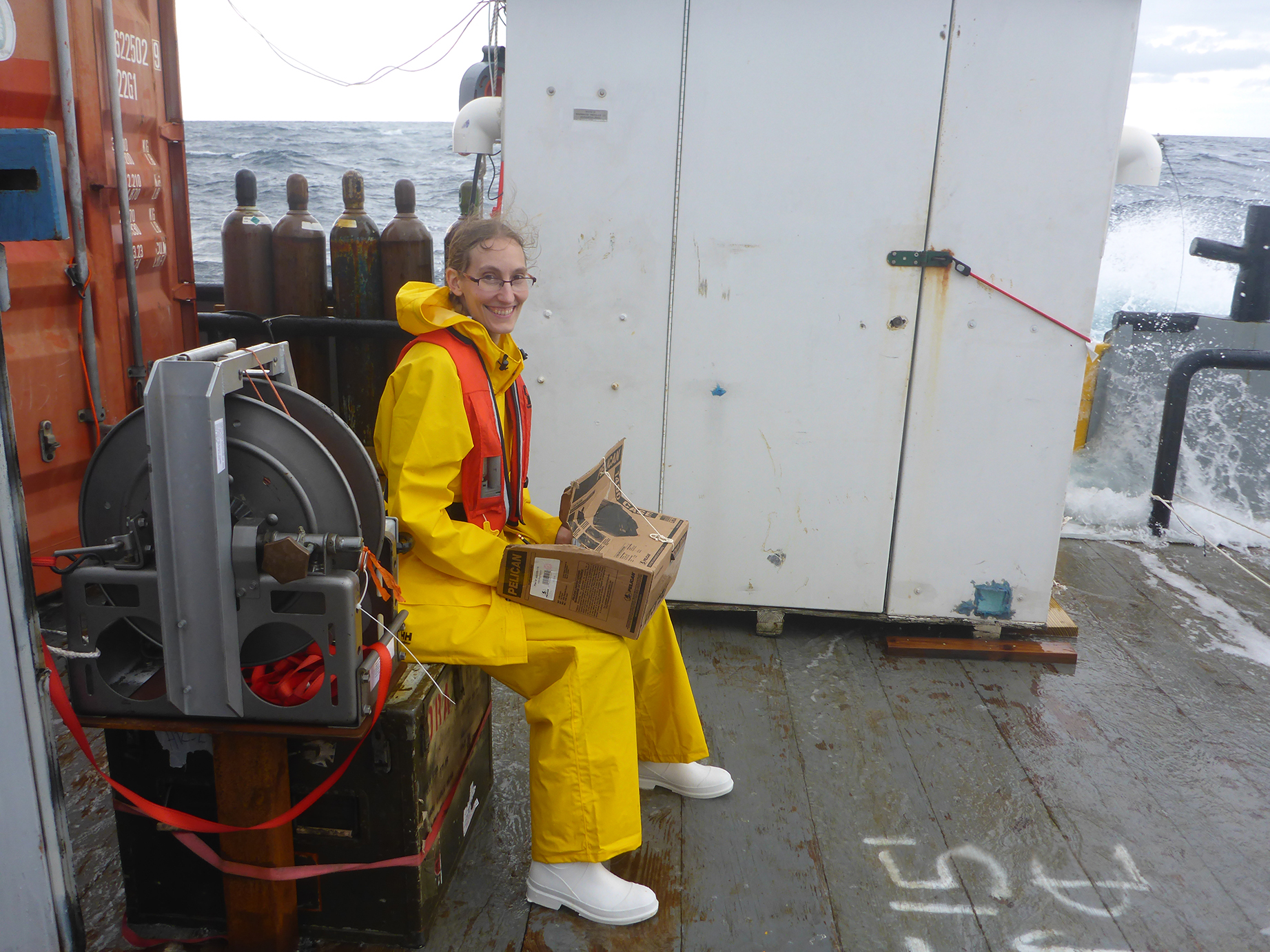Rowan University mathematician tackles a perplexing problem: Where will currents go next?
Rowan University mathematician tackles a perplexing problem: Where will currents go next?

The great swirling current that swoops tropical waters through the Gulf of Mexico carries tantalizing clues about the future: where fish will congregate, how hurricanes will behave and where oil spills might blob onto distant shorelines.
The Loop Current sometimes flows close to the Cuban shore and other times bulges toward the American coast. Occasionally, once or twice a year, it spins off a huge eddy that can merge again with its mother multiple times before it meanders westward in the Gulf and finally dissipates. Scientists don’t know what causes these eddies to form, what factors might foretell when they occur, or even how to define the precise moment when they occur.
It’s a “vexingly difficult” problem that fascinates Dr. Helga Huntley, an assistant professor of mathematics in Rowan University’s College of Science & Mathematics who studies ocean currents. Now, with support from a $234,109 grant from the National Academies of Science, Engineering and Medicine, Huntley is developing a mathematical diagnostic to forecast the formation of these eddies, using ocean physics and dynamical systems theory.
Just as meteorologists use numerical models to predict the weather, oceanographers can use similar models to understand where water will go next. To make sure such forecasts aren’t just realistic but actually reflect reality, the models are constrained by observations. In the ocean, gathering such data is more difficult and more expensive than in the air. So, scientists and mathematicians like Huntley are working to identify which observations are key to getting the Loop Current right.
The Gulf of Mexico is a good place to run a numerical ocean model because it’s mostly hemmed in by land, Huntley explained. And it’s an important body of water with societal impacts to large countries, especially in terms of fisheries, trade and oil extraction.
Huntley began studying the Gulf after the 2010 Deepwater Horizon drilling rig explosion caused a months-long underwater oil spill and one of the largest environmental disasters in American history.
“Generally, the field was prepared to figure out what happens when oil leaks from a tanker,” Huntley said. “What happens when it comes from a pipe under the ocean is a whole different ball game. Both the scientists and engineers weren’t prepared for that.”
Part of the resulting legal settlement led to a large chunk of money set aside for scientific research that’s now fueling investigations like Huntley’s.
For this project, Huntley will use simulations of the Gulf of Mexico to develop a new method to tell the birth story of what’s formally called the Loop Current Eddy.
Dynamical systems theory is a field of mathematics that studies systems that move, such as how people funnel through an airport security line or, in this case, where currents go. Rather than relying only on statistical probabilities, Huntley is also using fluid mechanics to understand the forces at work behind the water movement.
“It’s not random,” Huntley said. “That’s the whole key … we’re not just looking at the statistics. We want to know what causes the currents to do what they’re doing.”
Huntley expects to involve at least one student in her research this summer.
Dr. Dexter Whittinghill, who heads Rowan’s Mathematics Department, called Huntley “a great asset to the department.”
“Dr. Huntley’s research is an important example of the relevance and applications of mathematics and why studying advanced mathematics is so important,” added Dr. Karen Magee-Sauer, dean of the College of Science & Mathematics. “We are excited for Rowan students to do research with Dr. Huntley’s research group and discover the beauty of mathematics in solving real-world problems.”